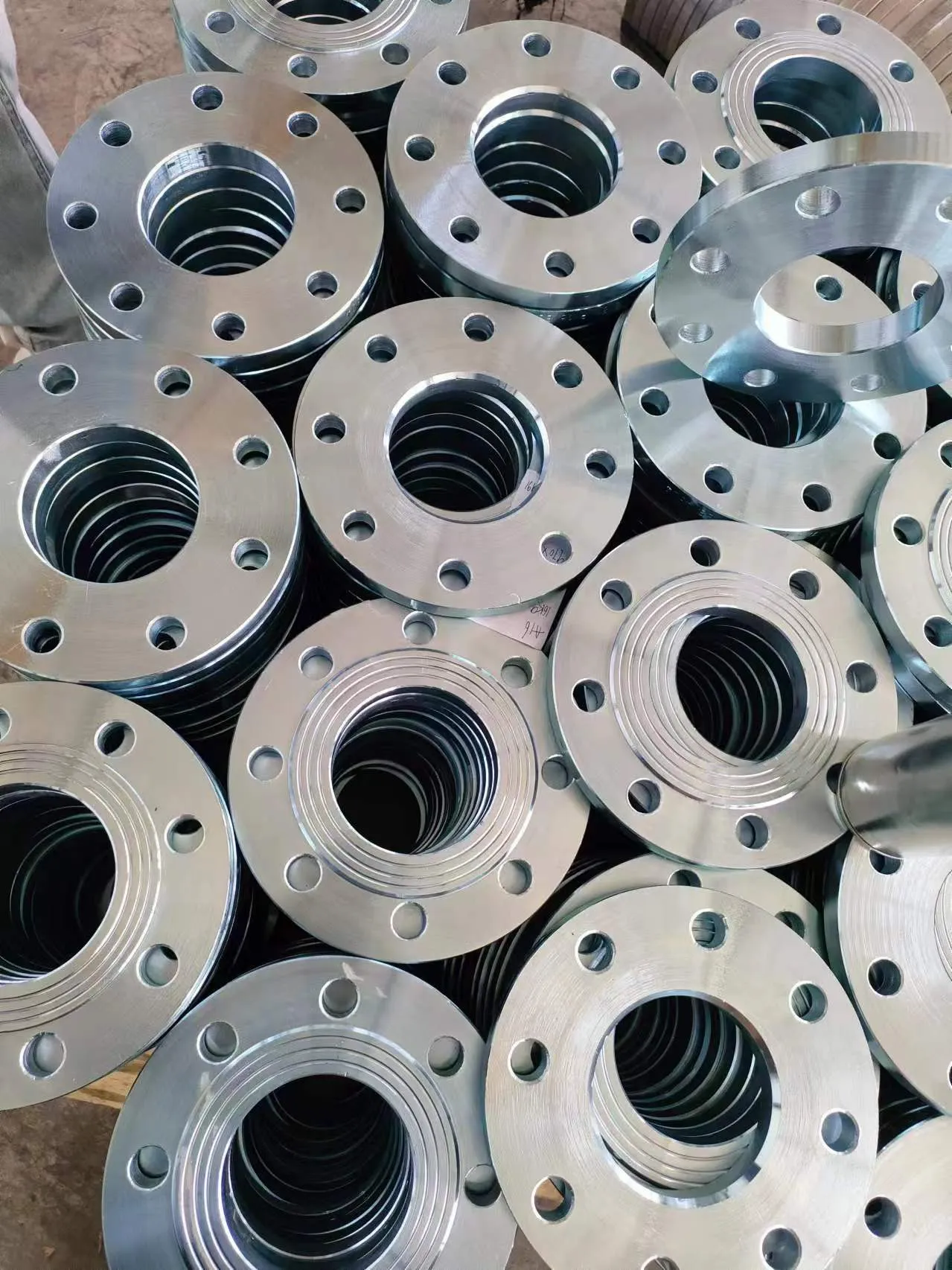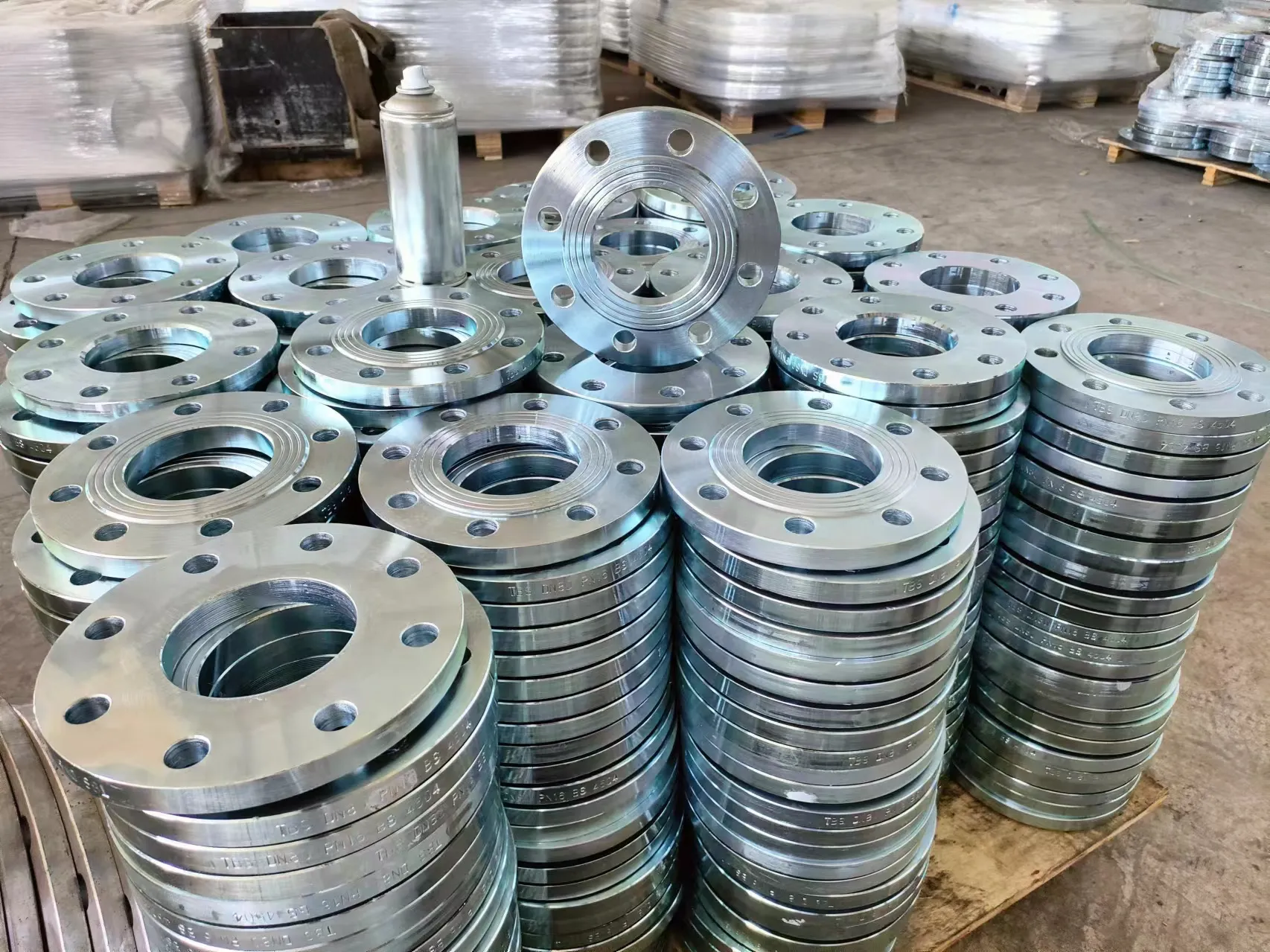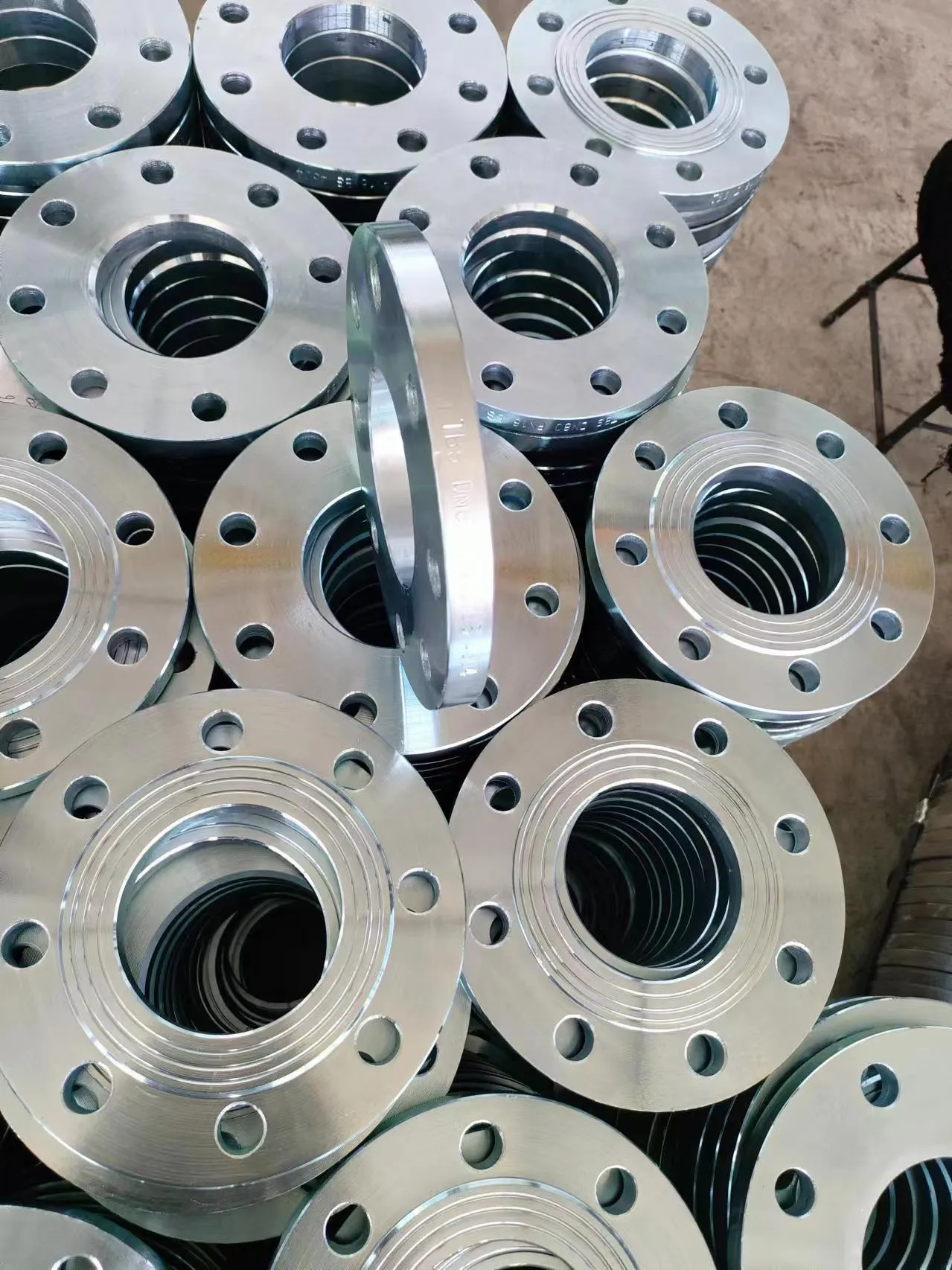Standard Reference
BS4504 is a British standard for pipe flanges. It specifies dimensions, pressure ratings, materials, manufacturing processes, and testing requirements for flanges. This ensures the quality, performance, and interchangeability of flanges in various engineering applications, providing a unified technical basis for the design, manufacture, and installation of flanges.
Structural Features
Plate Flange Structure: The plate flange is a flat circular part with bolt holes evenly distributed along the circumference. It is designed to connect pipes or other components through bolting. This type of flange has a simple structure, which makes it easy to manufacture and install. It is suitable for applications where the pressure and temperature are not extremely high, and is widely used in general piping systems.
Electrical/Cold Galvanized Coating
This is an electrochemical process where a layer of metal, usually zinc, is deposited on the surface of the flange. Electrical galvanizing can produce a relatively uniform and smooth coating. It not only enhances the corrosion resistance of the flange but also, in some cases, improves its electrical conductivity. This makes it suitable for applications where both corrosion protection and certain electrical properties are required, such as in electrical equipment connections and some anti-static piping systems.
Dimensions and Specifications
Nominal Diameter: Typically, it ranges from DN10 to DN600 or even larger to meet the connection needs of pipes with different diameters. The selection of nominal diameter depends on the specific requirements of the piping system and the flow rate and pressure of the medium.
Pressure Ratings: Include levels such as PN6, PN10, PN16, PN25, and PN40. Flanges with different pressure ratings have different thicknesses, numbers of bolt holes, and bolt hole diameters to ensure that they can withstand the corresponding pressures. For example, a flange with a higher pressure rating will have a greater thickness and more or larger bolt holes to ensure the tightness and safety of the connection under high pressure.
Material Selection
Base Material: Common choices include carbon steel, such as S235JR, which offers good strength and processability at a relatively low cost, making it suitable for general applications. Stainless steel, such as grades 304 and 316, is also used. Stainless steel has better corrosion resistance and mechanical properties, making it suitable for more demanding working environments, such as in the chemical and food processing industries where high hygiene and corrosion resistance are required.
Galvanized Material: The main material for galvanizing is zinc. Through the electrical or cold galvanizing process, a zinc layer is formed on the surface of the base material to provide protection against corrosion. In some special cases, other alloy coatings may be used to meet specific performance requirements, such as improving wear resistance or enhancing heat resistance.
Application Fields
Construction Industry: In building water supply and drainage systems and HVAC systems, these flanges are used to connect pipes. For example, in residential and commercial buildings, they are used in cold and hot water supply pipes, as well as in chilled water and cooling water pipes for air conditioning systems. The electrical or cold galvanized treatment helps prevent the pipes from rusting and corroding during use, thus prolonging the service life of the piping system.
General Industrial Fields: They are widely used in industrial piping systems where the corrosiveness of the medium is not high, such as in the textile, printing and dyeing, and paper industries for the transportation of water, steam, compressed air, and other media. The flanges can ensure the tightness and reliability of the piping connections under normal working conditions.
Electrical and Electronic Fields: Due to their good electrical conductivity and corrosion resistance, electrically galvanized flanges are often used in the connection pipes of electronic equipment and the connection of electrical circuit protection tubes. They can ensure the safe and stable operation of the electrical system and prevent electrical failures caused by corrosion, which is of great significance for the normal operation of electronic devices and the reliability of the power supply system.
-
Cangzhou Yulong Steel Co., Ltd.
-
Phone:
+86 13303177267 -
Email:
admin@ylsteelfittings.com
- English
- Arabic
- Italian
- Spanish
- Portuguese
- German
- kazakh
- Persian
- Greek
- French
- Russian
- Polish
- Thai
- Indonesian
- Vietnamese
- Zulu
- Korean
- Uzbek
- Hindi
- Serbian
- Malay
- Ukrainian
- Gujarati
- Haitian Creole
- hausa
- hawaiian
- Hebrew
- Miao
- Hungarian
- Icelandic
- igbo
- irish
- Japanese
- Javanese
- Kannada
- Khmer
- Rwandese
- Afrikaans
- Albanian
- Amharic
- Armenian
- Azerbaijani
- Basque
- Belarusian
- Bengali
- Bosnian
- Bulgarian
- Catalan
- Cebuano
- China
- China (Taiwan)
- Corsican
- Croatian
- Czech
- Danish
- Esperanto
- Estonian
- Finnish
- Frisian
- Galician
- Georgian
- Kurdish
- Kyrgyz
- Lao
- Latin
- Latvian
- Lithuanian
- Luxembourgish
- Macedonian
- Malgashi
- Malayalam
- Maltese
- Maori
- Marathi
- Mongolian
- Myanmar
- Nepali
- Norwegian
- Norwegian
- Occitan
- Pashto
- Dutch
- Punjabi
- Romanian
- Samoan
- Scottish Gaelic
- Sesotho
- Shona
- Sindhi
- Sinhala
- Slovak
- Slovenian
- Somali
- Sundanese
- Swahili
- Swedish
- Tagalog
- Tajik
- Tamil
- Tatar
- Telugu
- Turkish
- Turkmen
- Urdu
- Uighur
- Welsh
- Bantu
- Yiddish
- Yoruba

Write your message here and send it to us
Related News
-
Jul . 23, 2025Space-Saving Connection Mastery: How 1/2 Pipe Nipple’s 50mm Short Design Solves Dense Piping Installation Challenges?In the labyrinth of industrial machinery, where pipes weave through 200mm-wide gaps and every millimeter counts, the battle against cramped spaces often stalls projects.
-
Jul . 23, 2025Shale Gas Extraction Impact Resistance: How ASME B16.47 Flange's Hub-Thickened Design Passes Seismic Testing?In the high-stakes realm of shale gas extraction, where seismic activity and operational vibrations threaten pipeline integrity, the ASME B16.47 flange emerges as a critical safeguard.
















